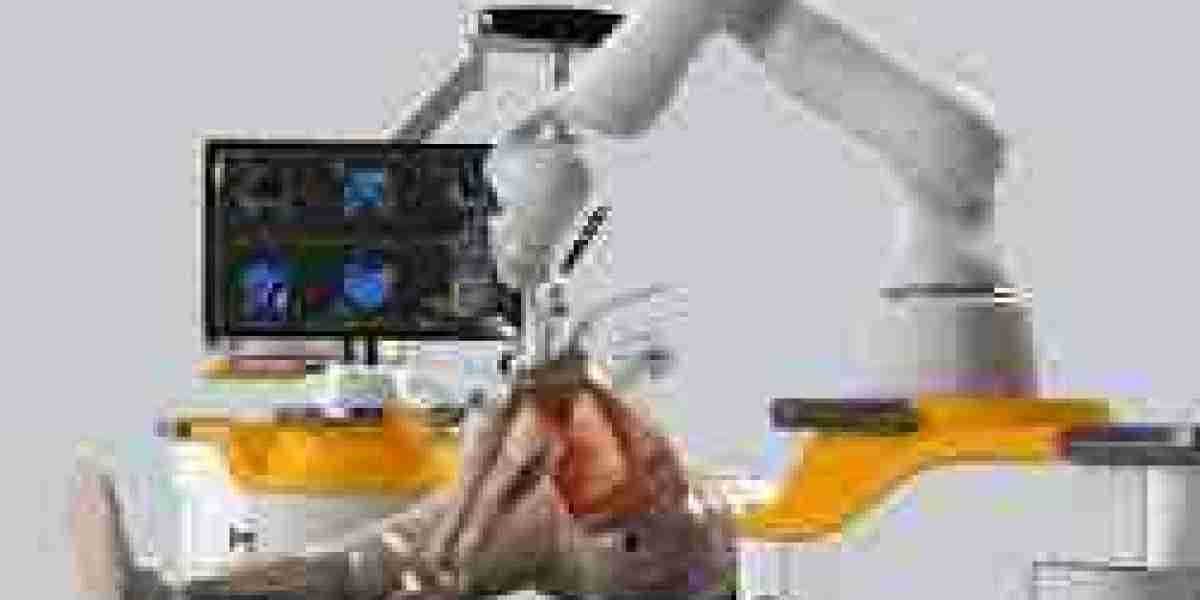The global neurosurgical robotics market is experiencing significant growth, driven by technological advancements, increasing demand for minimally invasive procedures, and a rising prevalence of neurological disorders. Spinal and cranial surgeries, in particular, are witnessing a surge in robotic-assisted interventions, offering enhanced precision, reduced recovery times, and improved patient outcomes.
Challenges in the Neurosurgical Robotics Market
High Initial and Maintenance Costs
One of the most significant barriers to the widespread adoption of neurosurgical robotics is the substantial financial investment required. The acquisition costs for advanced robotic systems can range from $1 million to $2.5 million, excluding ongoing maintenance, software updates, and training expenses . Such high costs can be prohibitive for smaller hospitals and healthcare facilities, particularly in developing regions, limiting their access to cutting-edge surgical technologies.
Regulatory Hurdles and Approval Delays
The commercialization of new neurosurgical robotic devices is subject to stringent regulatory processes, including extensive clinical trials and documentation requirements. These rigorous procedures can lead to protracted approval timelines, delaying the introduction of innovative technologies to the market . Additionally, varying regulatory standards across different regions can complicate global market entry for manufacturers.
Technical Limitations and System Reliability
Despite advancements, neurosurgical robots are not immune to technical challenges. Issues such as software malfunctions, hardware glitches, and system adaptability in complex surgeries can pose significant risks to patient safety. Moreover, the complexity of these systems requires specialized training and expertise, which may not be readily available in all healthcare settings .
Resistance to Technological Integration
Many surgeons accustomed to traditional surgical methods may exhibit reluctance toward adopting robotic systems. Concerns about the reliability, precision, and autonomy of robotic technologies can hinder their acceptance. Overcoming this resistance requires demonstrating the tangible benefits of robotic-assisted surgeries, such as improved surgical outcomes and reduced recovery times .
Opportunities in the Neurosurgical Robotics Market
Advancements in Robotic Technology
Continuous innovations in robotic systems, including enhanced instrument dexterity, real-time feedback mechanisms, and integration with artificial intelligence (AI), are expanding the scope of neurosurgical procedures that can be performed robotically. These technological advancements improve the precision and efficacy of surgeries, offering significant benefits to patients and healthcare providers alike .
Rising Demand for Minimally Invasive Surgeries
There is a growing preference for minimally invasive surgical procedures due to their associated benefits, such as reduced pain, shorter hospital stays, and faster recovery times. Neurosurgical robots facilitate these procedures by enabling precise movements and access to delicate areas, aligning with the increasing demand for outpatient and patient-centric care models .
Expansion into Emerging Markets
Emerging regions, particularly in Asia-Pacific and Latin America, present significant growth opportunities for the neurosurgical robotics market. Increasing healthcare investments, improving infrastructure, and rising awareness of advanced surgical options are driving the adoption of robotic systems in these areas .
Integration of Artificial Intelligence
The incorporation of AI and machine learning algorithms into neurosurgical robotics enhances pre-operative planning, intra-operative navigation, and post-operative monitoring. AI-driven analytics can improve surgical precision and patient outcomes, offering a competitive edge to manufacturers that integrate these technologies into their robotic systems .
Market Segmentation
By Type:
Remote Type: Held the largest market share in 2023, accounting for 55% of the total market. These systems offer enhanced precision and ease of use.
Handheld Type: Represented about 45% of the market, with the fastest growth observed in this segment due to increasing demand for portable and flexible robotic systems .
By Application:
Hospitals: The largest application segment, accounting for approximately 70% of the market in 2023, driven by the widespread adoption of robotic-assisted surgeries in clinical settings.
Ambulatory Surgery Centers: The fastest-growing segment, with a projected CAGR of 22% during the forecast period, as outpatient procedures continue to rise in demand .
Strategic Approaches to Overcome Challenges
To capitalize on the opportunities and mitigate the challenges in the neurosurgical robotics market, stakeholders can consider the following strategies:
Development of Cost-Effective Solutions: Manufacturers can focus on creating modular and scalable robotic systems that reduce initial investment costs and allow for incremental upgrades. Implementing financing options or leasing programs can also make these technologies more accessible to healthcare facilities with limited budgets .
Streamlining Regulatory Processes: Engaging early with regulatory bodies and providing comprehensive clinical data can expedite the approval process for new robotic systems. Standardizing regulatory requirements across regions can also facilitate smoother market entry for manufacturers .
Enhancing System Reliability: Investing in robust software development, real-time system monitoring, and advanced diagnostics can improve the reliability of neurosurgical robots. Training healthcare providers to troubleshoot and handle technical issues can further ensure the seamless operation of these systems .
Promoting Education and Training: Establishing standardized training programs, including simulation-based education and online learning modules, can equip surgeons with the necessary skills to operate robotic systems effectively. Collaborating with medical institutions and professional organizations can enhance the reach and impact of these training initiatives .
Conclusion
The neurosurgical robotics market stands at a pivotal juncture, with significant challenges and abundant opportunities shaping its trajectory. By addressing the barriers related to cost, regulation, technical reliability, and training, and by leveraging advancements in technology and expanding into emerging markets, stakeholders can foster the growth and adoption of robotic systems in neurosurgery. The future of neurosurgical robotics holds promise for enhanced surgical outcomes, improved patient care, and a more efficient healthcare system.




